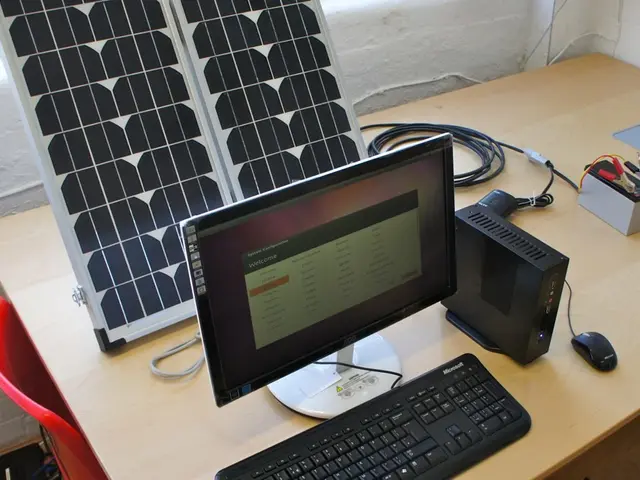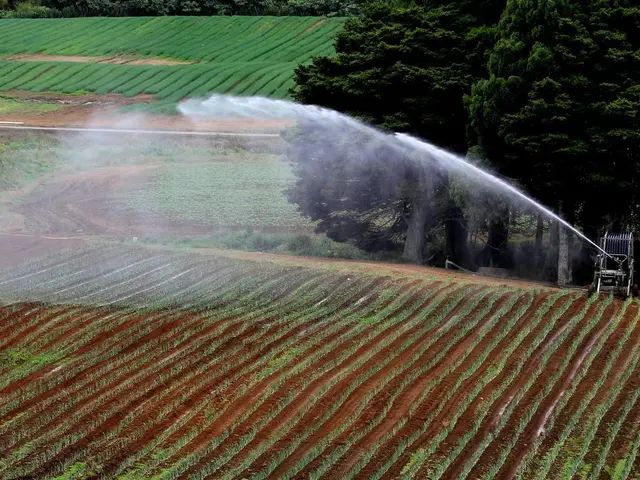New prospects arising for long-term energy storage in the UK
The United Kingdom is boldly marching towards a cleaner, greener future, with ambitious goals set for the next decade. By 2030, the country aims to have 95% clean power, and by 2035, a fully decarbonised grid. This transition is made possible, in part, by the adoption of long-duration energy storage (LDES) technologies.
At the forefront of LDES innovation is Highview Power, which is constructing the world's largest liquid air storage plant near Manchester, a 300 MWh facility. Meanwhile, Keep Energy Systems is piloting modular compressed air storage, a technology that can be deployed at industrial or community scale.
The renewable sector has already shown significant growth, with wind and solar making up the majority of the renewable energy supply in 2024. In fact, renewables supplied more than half of the UK's electricity for the first time that year. However, the intermittent nature of these sources necessitates reliable storage solutions, where LDES could prove to be the backbone of the UK's clean energy system.
In Germany, companies and research institutions are actively developing and implementing redox flow batteries (Flussbatterien) for LDES. Unienergy Technology LLC, in partnership with Chemours, is advancing redox flow battery technology, while ESS Tech, though US-based, is a key global player influencing the technology development with significant investments into long-duration iron flow batteries.
Flow batteries, like those developed by Invinity Energy Systems, offer 8-12 hours of reliable storage with minimal degradation. The first commercial-scale system is expected to be online by 2026. Innovators such as RFC Power are also experimenting with new chemistries, like hydrogen-manganese, promising higher efficiency at lower cost.
Thermal Energy Storage (TES) is another promising LDES technology. Companies like Exergy3 are leading the charge, using TES to decarbonise some of the dirtiest industries by converting surplus renewable electricity into heat stored in molten salts or ceramic blocks, reaching temperatures above 1,200°C, sufficient for cleaning up steel, cement, and glass production.
The UK government is supporting this transition with initiatives like the cap-and-floor mechanism, which gives investors revenue certainty while encouraging innovation in both proven and emerging storage technologies. The first round of this mechanism received an overwhelming industry response, with 171 project submissions.
The National Energy System Operator estimates that 11.5-15.3 GW of LDES will be needed to meet decarbonisation goals. To effectively combat climate change, the next generation of LDES should be strategically deployed near cities, industrial clusters, and grid bottlenecks.
While the UK has made significant strides in renewable energy and LDES, challenges remain. In 2024, 10% of UK wind power was curtailed, enough to power millions of homes. The increasing use of renewables has also led to a 70% fall in power sector emissions since 2010, but coal has almost disappeared as a source of electricity in the UK.
As the UK continues to push for cleaner energy, the role of LDES technologies will become increasingly crucial. With the right mix of technology, policy, and investment, LDES could ensure that Britain runs on reliable, round-the-clock clean power by the 2030s.
Read also:
- Aiming to simplify the move towards cleaner automobiles, the newly established ministry plans to take direct action with Pannier-Runacher, Létard, and Vautrin at the helm.
- "The imperfect yet essential documentary, "Planet of the Humans," raises challenging and uncomfortable inquiries"
- Exciting Escapades of Tintin
- More than half of British homes adhere to insulation standards established during the 1970s.








